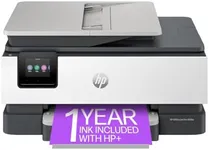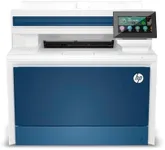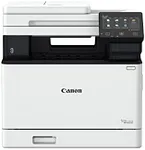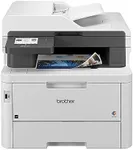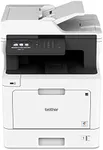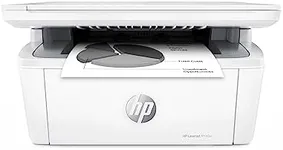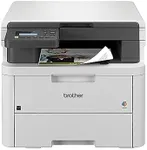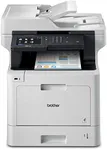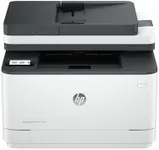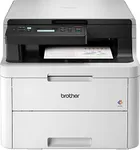Buying Guide for the Best Laser Color All In One Printer
Choosing the right laser color all-in-one printer can be a bit overwhelming given the variety of models and features available. However, by understanding your needs and focusing on key specifications, you can find the perfect printer for your home or office. Here are some important specs to consider and how to navigate them.Print SpeedPrint speed, measured in pages per minute (PPM), indicates how quickly a printer can produce documents. This is important if you need to print large volumes of documents regularly. Printers with speeds of 20-30 PPM are suitable for home use or small offices, while speeds above 30 PPM are better for larger offices with higher print demands. Consider your typical print volume to determine the right speed for you.
Print QualityPrint quality is measured in dots per inch (DPI) and determines the clarity and detail of the printed documents. Higher DPI values (1200 DPI and above) are ideal for printing high-resolution images and detailed graphics, while lower DPI values (600 DPI) are sufficient for text documents. If you need to print professional-quality photos or detailed graphics, opt for a higher DPI printer.
Monthly Duty CycleThe monthly duty cycle indicates the maximum number of pages a printer can handle per month without experiencing wear and tear. This is crucial for ensuring the longevity of your printer. For home use or small offices, a duty cycle of up to 5,000 pages is usually sufficient. For larger offices, look for printers with a duty cycle of 20,000 pages or more. Assess your average monthly print volume to choose the right duty cycle.
Connectivity OptionsConnectivity options determine how you can connect your devices to the printer. Common options include USB, Ethernet, Wi-Fi, and Bluetooth. Wi-Fi and Bluetooth are convenient for wireless printing from multiple devices, while Ethernet is ideal for a stable connection in an office network. USB connections are straightforward for direct printing from a single computer. Consider your preferred method of connection and the number of devices that will use the printer.
Paper HandlingPaper handling refers to the types and sizes of paper a printer can accommodate, as well as the capacity of its paper trays. If you need to print on various paper sizes (like envelopes, labels, or legal-sized paper), ensure the printer supports them. A larger paper tray capacity (250 sheets or more) is beneficial for reducing the frequency of refills, especially in busy offices. Think about the types of documents you print and how often you want to refill the paper tray.
Scanning and Copying FeaturesSince you are looking for an all-in-one printer, scanning and copying features are essential. Look for printers with high-resolution scanners (600 DPI or higher) for clear and detailed scans. Automatic Document Feeders (ADF) are useful for scanning or copying multiple pages quickly. Duplex scanning and copying (both sides of the paper) can save time and paper. Consider how often you will use these features and the types of documents you need to scan or copy.
Operating CostsOperating costs include the price of toner cartridges and other consumables. Laser printers generally have lower cost-per-page compared to inkjet printers, but toner cartridges can be expensive. Look for printers with high-yield toner options, which can print more pages before needing replacement. Consider the cost of replacement parts and the printer's energy efficiency. Evaluate your printing frequency and budget for consumables to find a cost-effective option.
Size and DesignThe size and design of the printer can affect where you place it and how it fits into your workspace. Compact models are ideal for small home offices, while larger models may be necessary for high-volume printing environments. Consider the dimensions of the printer and ensure it fits comfortably in your designated space. Also, think about the ease of access to paper trays and control panels.
